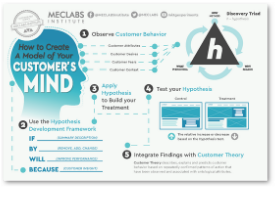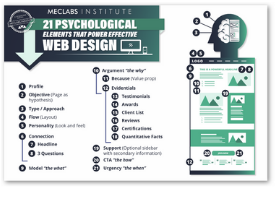A MarketingSherpa reader writes, “I’m trying to find advice about developing a powerful opt-in message that is both honest, yet compelling. Any idea where I could look for how-tos or great examples?”
My personal favorite email newsletter opt-in message (this week at least) was written by Dan Eskelson of ClearWater Landscape. It reads, “Learn professional landscaping tips, from ‘hands on’ gardening technique to design theory, in our free monthly ezine.”
Dan told me that he chose the wording after carefully examining his site server logs to find out what search terms visitors from search engines had found him using. Then he incorporated the most popular search terms into the opt-in message so it would strike at the hearts of visitors!
Inspired by Dan, I looked up which terms most people find our site by, and it turns out “Case Study” is the most popular — so you can guess how I’m rewording our subscription offers for the site redesign due out soon. 🙂
BTW: Case Study about ClearWater’s online marketing at:
http://www.MarketingSherpa.com/sample.cfm?contentID=1882
Eric Ward, famed link-marketing consultant (he helped put Amazon on the map), has started a special relocation directory to help out the 300+ About.com Guides who have been dropped, and those who wish to connect with them. This is a useful place for publishers looking for specialist writers, and for content publicists who want to get links to their niche content picked up by guide sites. Check it out at:
http://www.netpost.com/guidehelp/relocationdirectory.html
Ever had your phone ring and then when you picked it up, it went dead? It may have been a fax spammer’s collection technology which dials numbers seeking fax machine responses. When they get the fax signal instead of a human (or voice mail) they add the number to their database and sell it to other spammers.
The fax spam problem is now turning into an email spam problem because so many people use email accounts to receive digitized faxes these days. Jeff Adelman, VP General Counsel of J2 Communications (which owns emailed fax systems eFax and J2.com) grouses,“Every day we get hit by this. It’s a huge problem” Not the least because recipients like me (see my 11/16 blog) think it’s eFax that’s spamming us when this stuff shows up in our email in-boxes.
eFax is fighting back aggressively by collecting as many offender faxes as possible and reporting them to the FCC. Plus this month they are unveiling a new Web page that eFax and J2 customers can use to report unsolicited faxes. Bravo!
Looks like we can definitely expect to see a lot more online and email marketing by magazines in the coming year. Nearly every single one of the more than two dozen circulation marketing experts interviewed in Nov 2001’s Circulation Management Magazine, said their big challenge was replacing costly (and increasingly less responsive) direct postal mail campaigns with something else such as email/Internet marketing.
Chip Block, currently publishing strategist for Ziff Davis and Vice Chair USAPubs (a subscription agency), who is one of the deans of circulation marketing, said in the issue that he wonders if paid circulation is dead. He noted, “If annual consumer magazine circulation revenue is now about $10 billion as the MPA’s data indicate, is it possible that we’re spending $9.5 billion or somewhere in that ballpark to produce that revenue?”
My take is — hey consumers are paying $10 billion per year for magazine subscriptions. Whoopee! Let’s not abandon those $10 billion just because they cost a lot to make via traditional marketing campaigns. Let’s explore every way possible to get a lower cost per acquisition. Got some feedback? Email me at editor@contentbiz.com
Clever ad sales tactic from PRWeek, the weekly print tabloid for PR professionals. They are selling the advertisers in their “listings” section in the back (you know where businesses pop short ads with their logo, 8-12 to a page) on an email version. Now once a month PRWEEK subscribers get a special emailed guide to a different type of vendor.
This month’s email subject line is “Do you need to find a PR firm? with this email you can search by State or even Industry sector!”. The HTML email is really nothing more than their print directory scanned in. Paying PR firms have thumbnail logos and brief text descriptions that hotlink to their own Web sites. The Ad Sales guy in charge could not give me exact sales figures
(secrecy) but admitted it’s really popular.
If you are a B2B trade magazine or trade directory publisher, this is a great idea to steal. For a free sample, email matthew.gull@prweek.com
The folks at one of my favorite UK-sites covering the Net marketing scene just emailed over an invite to all London-based Sherpa readers:
As Great Escape, sorry, Christmas Day approaches, netimperative.com and the BOOB Honchos would like to see the industry turn its back on the gloom and declare: I’ll have a babycham. BOOB (Buy our own Booze) is a networking party set up over two years ago by a collective of internet professionals who wanted to get together once a month for a few drinks without being beholden to a commercial sponsor. Last month’s BOOB was a great success and we’ve had huge amounts of encouragement from those who couldn’t make it.Of course, we’d also like you to come along to the next BOOB Night and bring some likeminded colleagues with you. No need to RSVP, just turn up.
Date: Thursday December 6th 6:30pm til 12:30am
Venue: Denim, 4a Upper St Martins Lane, London. WC2 (downstairs bar)
I just clicked through on a spam message and I feel kinda guilty about it. It was for a “Unique Mexican Gift Basket” and I’m a sucker for Mexican handcrafts. Luckily the basket just featured stuff like Tequila and salsa, which are easier for me to resist. But, if it had had stuff I yearned for … would I have bought? Should I have bought?
As an outspoken supporter of the anti-spam movement, it would be wrong for me to buy something from a piece of spam because if you buy then you encourage them to think it works. Guilt. guilt, guilt.
How good is your Web site? Gartner’s now offering their “Web Evaluation Tool” for free.
They’re clever marketers, because this is just a series of three pretty obvious quizzes that you fill out ranking your own site on everything from personalization to customer value. But doesn’t “Evaluation Tool” sound more impressive than that? Anyway, for some reason they don’t let you take the quizzes at their site, instead you have to “download the tool.” If you’re trying to pry extra Web development costs out of your CEO and he/she is the type to be impressed with the Gartner brand name, then download the Tool today here and use the results for some internal marketing.
Did this year’s stay-at-home Thanksgiving affect content sites in the US? I sure noticed a difference. Last year Thanksgiving was one of our *best* days ever — we got the highest rate of new subscribers in a single day that were not linked to a specific promotion ever. MarketingSherpa’s 2000 traffic logs revealed that thousands of marketing and content professionals fled familial togetherness around 2pm-9pm ET on Thanksgiving day. They went online and subscribed to Sherpa instead.
However, this year it was one of our lowest days for new subscribers, and traffic was far down as well. The only thing I can figure is that since fewer people traveled, the average marketing pro was surrounded by fewer, potentially annoying family members. It’s a crackpot theory, but it’s mine.
http://www.marketingsherpa.com
According to a recently published Consumer Reports survey, consumers vastly prefer buying computers online to buying them in stores. Apple, Dell, IBM, Micron and Gateway’s sites all got good or great marks for selection, “savvy” and useful shopper help features. Not a single brick and mortar retailer, such as Costco, Office Depot, Circuit City, Best Buy, got high marks. In fact, offline stores’ marks were pitiful compared to online.
However, everybody who got high marks for selling online, got pretty lousy marks for tech support. Seems like computer sellers have figured out how to make the sale, but not how to give good after-sales support to keep the customer happy. Which is pretty short-sighted given that the personal computer marketplace is no longer a new one. Most people who will buy a computer in the next few years have done so at least once in the past. The game is now about making consumers happy for a lifetime of multiple sales, not just grabbing that first one.








